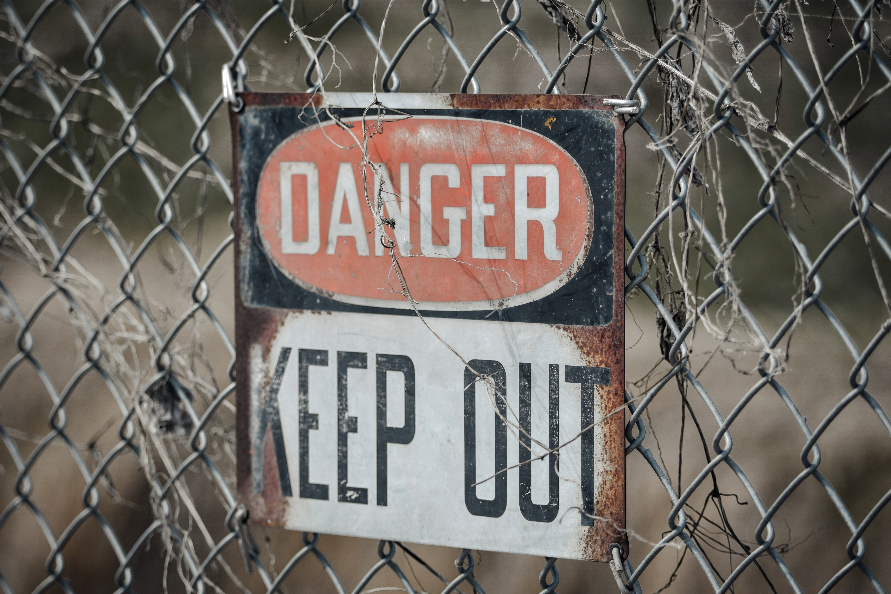Many people think that if Jesus paid it all, we now have this divine Visa card with an unlimited balance. We can just flash it whenever we want to cover whatever sin we choose. And as the Apostle Paul anticipated, some people will even justify their actions by saying, “Hey, if God gets more glory by showing grace, doesn’t my sinning give him more space to be glorified?”
Paul answers those claims with the strongest negation possible: “By no means!” (I like how some of the older translations handle this phrase: God forbid!) Why is Paul so opposed to this line of thinking? He writes, “How can we who died to sin still live in it?” (Romans 6:2 CSB)
But that raises an interesting question in its own right, doesn’t it? What does he mean when he says we’ve died to sin?
What Paul doesn’t mean is that we have lost all interest in sin. Certain streams of Christian thought have, in fact, taught that Christians can achieve earthly perfection, but Romans 7 makes it clear that believers are still tempted and seduced by sin—in addition to, well, nearly every Christians’ experience with temptation.
Fortunately, Paul doesn’t leave us in the dark:
“Do you not know that all of us who have been baptized into Christ Jesus were baptized into his death? We were buried therefore with him by baptism into death, in order that, just as Christ was raised from the dead by the glory of the Father, we too might walk in newness of life.”
–Romans 6:3–4
When we accept Christ, we “die to sin” in two ways:
1. Being “dead to sin” means we renounce it once and for all.
This is called “repentance,” or changing your mind toward sin. It means you were once the lord of your own life, but from this point forward, you are going to do an about-face and follow Jesus as the Lord of your life.
Repentance is the essence of conversion. If repentance didn’t happen at your conversion, then whatever else happened at your “conversion,” it wasn’t a real conversion.
Some may say, “Well, I believe in God.” And that’s all well and good. But the book of James says even the demons believe in God, but it doesn’t mean they’re saved. There’s a world of difference between believing in God and trusting him as your Lord.
Others lean on their church involvement. But as my youth pastor used to say, “Going to church doesn’t make you a Christian any more than going to McDonald’s makes you a quarter pounder with extra cheese.” The core issue is repentance.
Conversion begins in repentance and surrender, and it can be pictured in baptism. One of the questions we ask people at the Summit when they get baptized is, “Are you willing to go wherever Jesus tells you to go and do whatever he tells you to do?” We put them under the water, showing they have died to their old way of living and are being raised to a new way of life.
2. Being “dead to sin” means that, through his resurrection, Christ has destroyed the reign of sin in our lives.
When we accept Christ as Savior, Jesus pours the power of the resurrection in our hearts. This also is pictured in baptism: We go under the water, showing our body of sin has died, and then come out of the water, showing that the life of Christ has become our own.
And because of that, we have access to Christ’s resurrection power over sin.
“For if we have been united with him in a death like his, we shall certainly be united with him in a resurrection like his” (Romans 6:5).
“United” is a horticultural term, where you take branches off of one tree and graft them onto another tree. When we start following Christ, the Spirit takes the dead branch of our life and grafts it into Christ’s living root, and his life starts to flow into us.
Not Sinless Perfection, But a New Direction
This is Paul’s logic: If sin is renounced through baptism and its reign over us is broken by the power of resurrection, how can we continue to willfully practice it?
That word “willfully” is important here. I’m not talking about moments—or even seasons—of sin. All believers will have moments when they choose sin. What Paul is talking about is a set direction, a pattern. We’re all following a trajectory, either towards God or away from him.
In other words, dying to sin doesn’t mean sinless perfection. But it does mean a new direction.
After all, we cannot encounter something as powerful as the resurrection and not show its effects.
Let’s say you’re stuck in a parking lot because your little Honda Civic has a dead battery. Someone pulls up in a Ford F-250 with jumper cables four inches thick, ready to jump your Civic’s little battery.
But you say, “Wait a minute. First, I want to make sure power is flowing through these cables.” So you attach both positive and negative nodes to your tongue and say, “Yep, it’s giving power.”
I don’t think so.
If you really attached those jumper cables to your tongue, the power would change you. You’d walk different. You’d talk different. Shoot: You’d smell different. There’s no way to encounter that level of power and stay the same.
The resurrection is not just a fact of history past; it is power to make new in the present. The gospel is not about turning over a new leaf; it’s about receiving new life.


